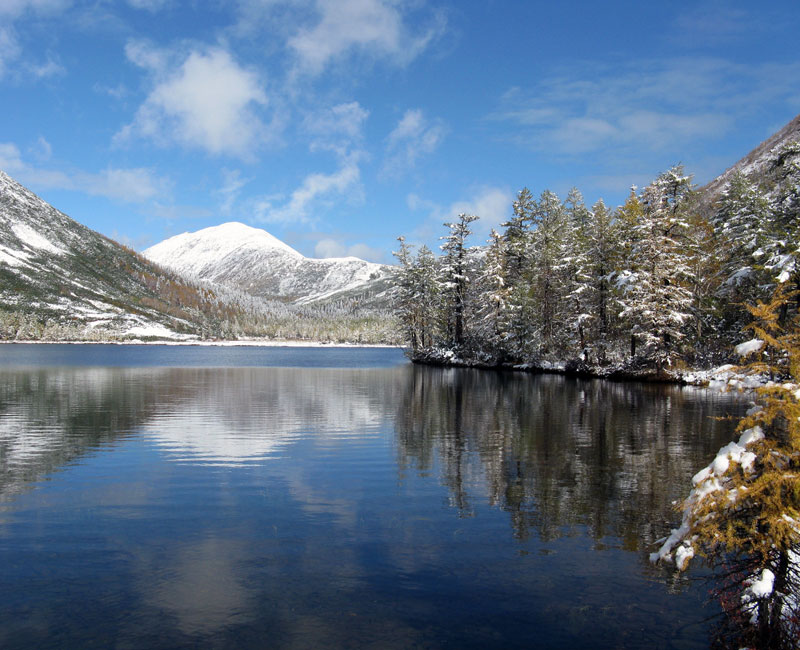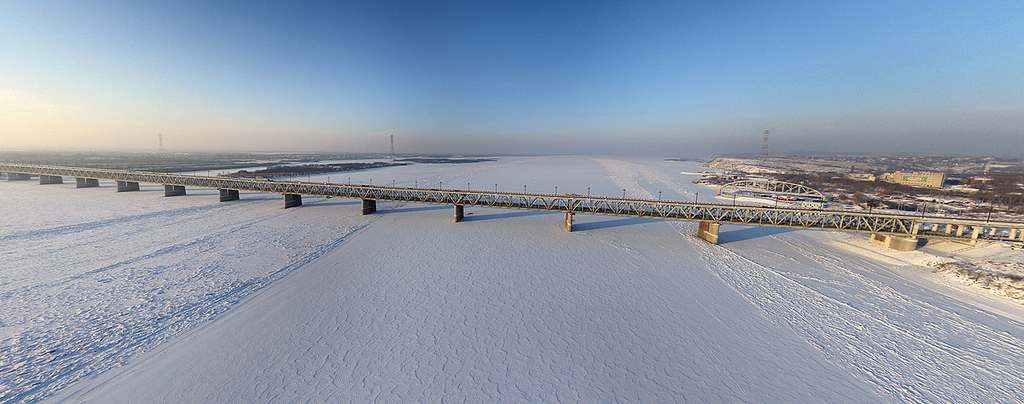|
Dusse-Alin
The Dusse-Alin (russian: Дуссе-Алинь) is a mountain range in Khabarovsk Krai, Russian Far East.Google Earth Although it is named after this range, the Dusse-Alin Tunnel of the Baikal–Amur Mainline is located about to the southwest. History The range was first roughly mapped by Russian explorer Alexander von Middendorf in 1844. In the wake of his studies, a large Russian military expedition led by Nikolai Khristoforovich Akhte continued the exploration of the area between 1849 and 1853. The German surveyor of the Russian service Ludwig Schwarz took part in the expedition as an astronomer. Together with topographers Stepan Vasilievich Krutiv and Alexei Argunov, as well as geologist Nikolay Gavrilovich Meglitsky, the Dusse-Alin range area was studied and topographically surveyed in detail. Based on their measurements, the first accurate map of the Dusse-Alin was drawn. In 1861 German botanist and geologist of the Russian service Fyodor Schmidt carried out thorough p ... [...More Info...] [...Related Items...] OR: [Wikipedia] [Google] [Baidu] |
Dusse-Alin Tunnel
The Dusse-Alin Tunnel () is a two-kilometre-long railway tunnel on the Baikal–Amur Mainline (BAM) in Siberia, 88 kilometres east of Novy Urgal. Although it is named after the Dusse-Alin located about further northeast, here the line crosses the Bureya Range to enter the Amgun River valley just north of the Badzhal Range.Google Earth Construction Work started in 1939. Gulag prisoners arrived on foot, provided only with hand tools, one horse and a single motorized cart. In 1940 the guard commander shot the chief engineer in the back, an act that was ruled an accident (the engineer, Konserov, had previously received an Order of Lenin for his work on the White Sea–Baltic Canal). Work stopped in 1942 and resumed in 1947. The tunnel was officially opened in 1950, but was never used because the rest of the BAM was incomplete. Work on the BAM stopped after Stalin's death in 1953. Water leaked into the abandoned tunnel and it eventually became filled with ice. Work was resumed in 1 ... [...More Info...] [...Related Items...] OR: [Wikipedia] [Google] [Baidu] |
Bureya Range
, photo = Korbohon.jpg , photo_alt = , photo_caption = View of Korbokhon lake at the northern end of the range , country_type = , country = Russia , country1 = , country2 = , region_type = , region = Khabarovsk Krai Jewish Autonomous Oblast , region1 = , border = , border1 = , biome = , highest = Unnamed , elevation_m = 2167 , elevation_system = , elevation_note = , coordinates = , coordinates_note = , length_km = 400 , width_km = , area_km2 = , length_orientation = , width_orientation = , length_note = , width_note = , area_note = , range_coordinates = , range_coordinates_note = , geology = Granite, gneiss, sediment ... [...More Info...] [...Related Items...] OR: [Wikipedia] [Google] [Baidu] |
Bureya Nature Reserve
(Also: Bureinsky Zapovednik) , iucn_category = , photo = File:Озеро Медвежье.jpg , photo_caption = Bear Lake, Bureya Zapovednik , photo_width=300 , map = Russia , relief = yes , map_caption = Location of Reserve , location = Dusse-Alin, Khabarovsk Krai , nearest_city = Khabarovsk , coordinates = , coords_ref = , area = , established = , website=http://zapbureya.ru/ , governing_body=Ministry of Natural Resources and Environment (Russia) Bureya Nature Reserve (russian: Буреинский заповедник) is a protected area (Zapovednik) about 200 km northwest of the city of Khabarovsk, in the Verkhnebureinsky District of Khabarovsk Krai, in the Russian Far East. The territory is one of mountain tundra, rivers and lakes, and taiga forests. It includes the headwaters of the left and right tributaries of the Bureya River, part of the lower Amur River basin. The reserve was created in 1987, and covers an area of . Topography The Bureya Reser ... [...More Info...] [...Related Items...] OR: [Wikipedia] [Google] [Baidu] |
Khabarovsk Krai
Khabarovsk Krai ( rus, Хабаровский край, r=Khabarovsky kray, p=xɐˈbarəfskʲɪj kraj) is a federal subject (a krai) of Russia. It is geographically located in the Russian Far East and is a part of the Far Eastern Federal District. The administrative centre of the krai is the city of Khabarovsk, which is home to roughly half of the krai's population and the largest city in the Russian Far East (just ahead of Vladivostok). Khabarovsk Krai is the fourth-largest federal subject by area, and has a population of 1,343,869 as of 2010. The southern region lies mostly in the basin of the lower Amur River, with the mouth of the river located at Nikolaevsk-on-Amur draining into the Strait of Tartary, which separates Khabarovsk Krai from the island of Sakhalin. The north occupies a vast mountainous area along the coastline of the Sea of Okhotsk, a marginal sea of the Pacific Ocean. Khabarovsk Krai is bordered by Magadan Oblast to the north, Amur Oblast, Jewi ... [...More Info...] [...Related Items...] OR: [Wikipedia] [Google] [Baidu] |
Baikal–Amur Mainline
The Baikal–Amur Mainline (russian: Байкало-Амурская магистраль, , , ) is a broad-gauge railway line in Russia. Traversing Eastern Siberia and the Russian Far East, the -long BAM runs about 610 to 770 km (380 to 480 miles) north of and parallel to the Trans-Siberian Railway. The Soviet Union built the BAM as a strategic alternative route to the Trans–Siberian Railway, seen as vulnerable especially along the sections close to the border with China. The BAM's costs were estimated at $14 billion, and it was built with special, durable tracks since much of it ran over permafrost. Due to the severe terrain, weather, length and cost, Soviet general secretary Leonid Brezhnev described BAM in 1974 as "the construction project of the century". If the permafrost layer that supports the BAM railway line were to melt, the railway would collapse and sink into peat bog layers that cannot bear its weight. In 2016 and 2018 there were reports about climate chang ... [...More Info...] [...Related Items...] OR: [Wikipedia] [Google] [Baidu] |
Verkhnebureinsky District
Verkhnebureinsky District (russian: Верхнебуре́инский райо́н), Upper Bureya District, is an administrativeResolution #143-pr and municipalLaw #194 district (raion), one of the seventeen in Khabarovsk Krai, Russia. It is located in the west of the krai. The area of the district is . Its administrative center is the urban locality (a work settlement) of Chegdomyn. Population: The population of Chegdomyn accounts for 47.5% of the district's total population. The Bureinsky Nature Reserve, a protected area (zapovednik) is located in the district, covering the upper course of the Bureya River The Bureya () is a south-flowing, left tributary of the Amur, Amur river in Russia. It is long, and has a drainage basin of . Its name comes from the Evenk language, Evenk word ''birija'', meaning river. Course The Bureya is formed from the junc .... References Sources * * * * {{Use mdy dates, date=March 2013 Districts of Khabarovsk Krai ... [...More Info...] [...Related Items...] OR: [Wikipedia] [Google] [Baidu] |
Yam-Alin
The Yam-Alin (russian: Ям-Алинь) is a mountain range in Amur Oblast and Khabarovsk Krai, Russian Far East. Google Earth The range is part of the Ezop/Yam-Alin volcanic zone. History The range is located in a remote area and was unexplored until mid 19th century. Between 1849 and 1853, a large Russian military expedition led by Nikolai Khristoforovich Akhte operated in the Russian Far East. The German surveyor of the Russian service Ludwig Schwarz was assigned to it as an astronomer. Together with topographers Stepan Vasilievich Krutiv and Alexei Argunov, as well as geologist Nikolay Gavrilovich Meglitsky, the Yam-Alin range area was studied and topographically surveyed in detail. Based on their measurements, the first reliable map of Yam-Alin was drawn in 1851. Geography The Yam-Alin and the Dusse-Alin to the south of it are northern prolongations of the Bureya Range. Its mountains display alpine relief and stretch for about . [...More Info...] [...Related Items...] OR: [Wikipedia] [Google] [Baidu] |
Ezop Range
The Ezop Range (russian: Хребет Эзоп) is a range of mountains in far North-eastern Russia. Administratively it belongs partly to Amur Oblast and partly to the Khabarovsk Krai of the Russian Federation. The range is part of the Ezop / Yam-Alin volcanic zone. Geography The Ezop is a range in northeastern Siberia, located in the eastern end of Amur Oblast and the southwestern side of Khabarovsk Krai. It is part of the Yankan - Tukuringra - Soktakhan - Dzhagdy group of mountain ranges.Эзоп (горный хребет) // : (in 30 vols.) / Ch. ed. A.M. Prokhorov . - 3rd ed. - M .: Soviet Encyclopedia, 1969-1978. The Ezop Range ... [...More Info...] [...Related Items...] OR: [Wikipedia] [Google] [Baidu] |
Amgun
The Amgun () is a river in Khabarovsk Krai, Russia that flows northeast and joins the river Amur from the left, 146 km upstream from its outflow into sea. The length of the river is . The area of its basin is . The Amgun is formed by the confluence of the Ayakit and Suluk. Its main tributary is the Nimelen. The Amgun teems with fish, such as , , [...More Info...] [...Related Items...] OR: [Wikipedia] [Google] [Baidu] |
Selemdzha
The Selemdzha () is a river in the Amur Region of Russia. It is the biggest, left tributary of the Zeya. The length of the river is 647 km. The area of its basin 68,600 km². Course The Selemdzha has its source where three mountain ranges meet the Bureya Range, the Dusse-Alin from the south, the Ezop Range from the west and the Yam-Alin from the north, and flows first northwest with the Selemdzha Range to the north, and then westwards across the Zeya-Bureya Plain.Селемджа // : (in 30 vols.) / Ch. ed. A.M. Prokhorov . - 3rd ed. - M .: Soviet Encyclopedia, 1969-1978. The [...More Info...] [...Related Items...] OR: [Wikipedia] [Google] [Baidu] |
Great Soviet Encyclopedia
The ''Great Soviet Encyclopedia'' (GSE; ) is one of the largest Russian-language encyclopedias, published in the Soviet Union from 1926 to 1990. After 2002, the encyclopedia's data was partially included into the later ''Bolshaya rossiyskaya entsiklopediya'' (or ''Great Russian Encyclopedia'') in an updated and revised form. The GSE claimed to be "the first Marxist–Leninist general-purpose encyclopedia". Origins The idea of the ''Great Soviet Encyclopedia'' emerged in 1923 on the initiative of Otto Schmidt, a member of the Russian Academy of Sciences. In early 1924 Schmidt worked with a group which included Mikhail Pokrovsky, (rector of the Institute of Red Professors), Nikolai Meshcheryakov (Former head of the Glavit, the State Administration of Publishing Affairs), Valery Bryusov (poet), Veniamin Kagan (mathematician) and Konstantin Kuzminsky to draw up a proposal which was agreed to in April 1924. Also involved was Anatoly Lunacharsky, People's Commissar of Educatio ... [...More Info...] [...Related Items...] OR: [Wikipedia] [Google] [Baidu] |
Alexei Argunov
Alexey, Alexei, Alexie, Aleksei, or Aleksey (russian: Алексе́й ; bg, Алексей ) is a Russian language, Russian and Bulgarian language, Bulgarian male first name deriving from the Greek language, Greek ''Aléxios'' (), meaning "Defender", and thus of the same origin as the Latin Alexius. Alexey may also be Romanization of Russian, romanized as ''Aleksei'', ''Aleksey'', ''Alexej'', ''Aleksej'', etc. It has been commonly westernized as Alexis (given name), Alexis. Similar Ukraine, Ukrainian and Belarus, Belarusian names are romanized as Oleksii (Олексій) and Aliaksiej (Аляксей), respectively. The Russian Orthodox Church uses the Old Church Slavonic version, Alexiy (Алексiй, or Алексий in modern spelling), for its Saints and hierarchs (most notably, this is the form used for Patriarchs Partiarch Alexius I, Alexius I and Patriarch Alexius II, Alexius II). The common hypocoristic is Alyosha (other), Alyosha () or simply Lyosha () ... [...More Info...] [...Related Items...] OR: [Wikipedia] [Google] [Baidu] |

